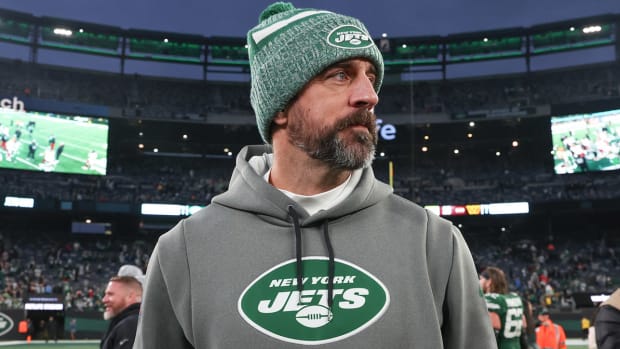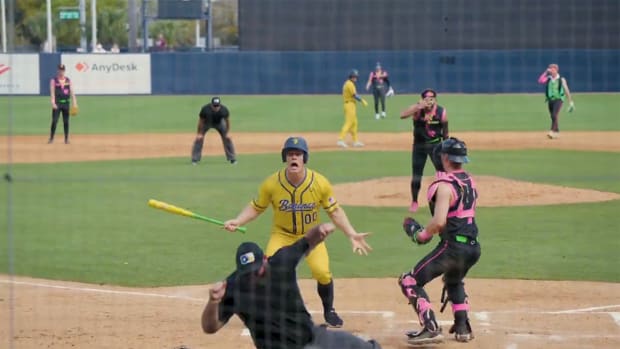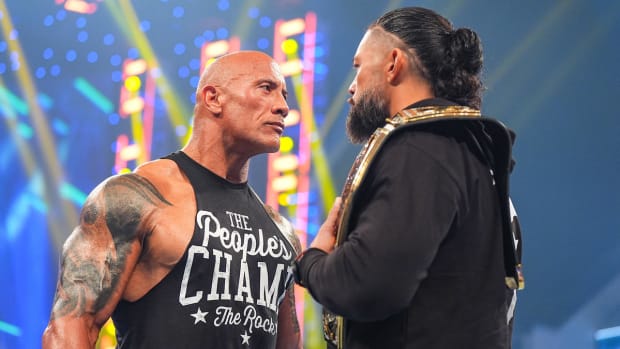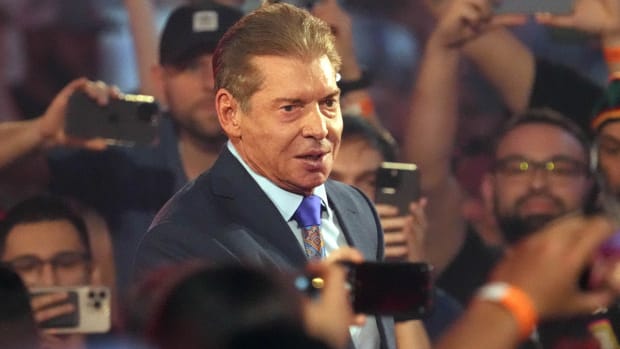AEW Makes a Statement With Sold-Out Show at Arthur Ashe Stadium
The message the All Elite Wrestling wanted to deliver with its sold-out Grand Slam show at Arthur Ashe Stadium was clear: WWE no longer has the New York City wrestling scene in a headlock.
It was a message delivered in words—“New York is now AEW’s town,” Yonkers native Eddie Kingston told the crowd in a show-closing promo—and even louder actions.
More than 20,000 people packed into the U.S. Open’s signature venue in Queens for the company’s first show in the five boroughs. They tailgated in the parking lots for hours; the line for vaccine verification already stretched all the way back to the 7 train an hour before the gates were opened. They cheered loudly inside the arena for a prerecorded video package featuring C.M. Punk. They erupted during the undercard matches taped earlier in the night for Dark: Elevation, one of AEW’s two YouTube series. When Bryan Danielson’s “Flight of the Valkyries” theme hit and the fans realized that the biggest match of the night—his dream match with Kenny Omega—would be kicking off the live broadcast of Dynamite, the place came unglued.
AEW put on a show worthy of such a massive, enthusiastic crowd. The Danielson-Omega match was one of the best the company has ever had. (Users on the popular wrestling site Cagematch.net have rated it as the third-best match in AEW history.) Danielson and Omega have been two of the industry’s finest performers for years now, but until the formation of AEW, a match between them seemed like an unattainable fantasy. Omega appeared content to keep working in Japan and Danielson had no reason to leave WWE. Seeing them lock up was an encapsulation of what makes AEW so exciting: The United States has a wrestling promotion capable of putting on dream matches that won’t happen in WWE.
Not only would Vince McMahon’s company never put a match of that quality on free television, it would never have it end in a time-limit draw. That’s partly for technical reasons— WWE’s rules do not include time limits—but also because of WWE’s approach to storytelling. The Danielson-Omega match should not have had a decisive winner. It was Danielson’s first match in AEW and it would have been detrimental to his character to have him lose. But having Omega, the world champion, lose to a guy who had never wrestled for the company, would have cheapened his title reign. In WWE, a nonfinish would have featured outside interference, a double count-out or some other kind of chicanery that makes for an unsatisfying conclusion. But in AEW, the story Danielson and Omega told made both men look stronger.
While none of the other matches on the card could equal Danielson and Omega’s display, each one did its part to help the event live up to the lofty expectations. From the moment Dynamite went on the air at 8 p.m. local time, to midnight, when taping for Friday’s episode of Rampage wrapped up, the crowd’s energy barely wavered. Hardly anyone headed for the exits early. It looked like all but a few of the fans remained in their seats all the way through to the end of the five-hour show.
Grand Slam was an anomaly for AEW. Beginning with next week’s Dynamite in Rochester, the company is going back to performing in arenas with about 10,000 seats, mostly on college campuses. It won’t fill an arena the size of Arthur Ashe again for a long time, but just showing that it can sell out the largest indoor venue in New York City is a remarkable feat for a company that is less than three years old. Before AEW was formed, it would have been ludicrous to suggest that any wrestling company in the world other than WWE could sell 20,000 tickets in the United States. If Wednesday’s show proved anything, it’s that AEW will have no trouble doing it again.




